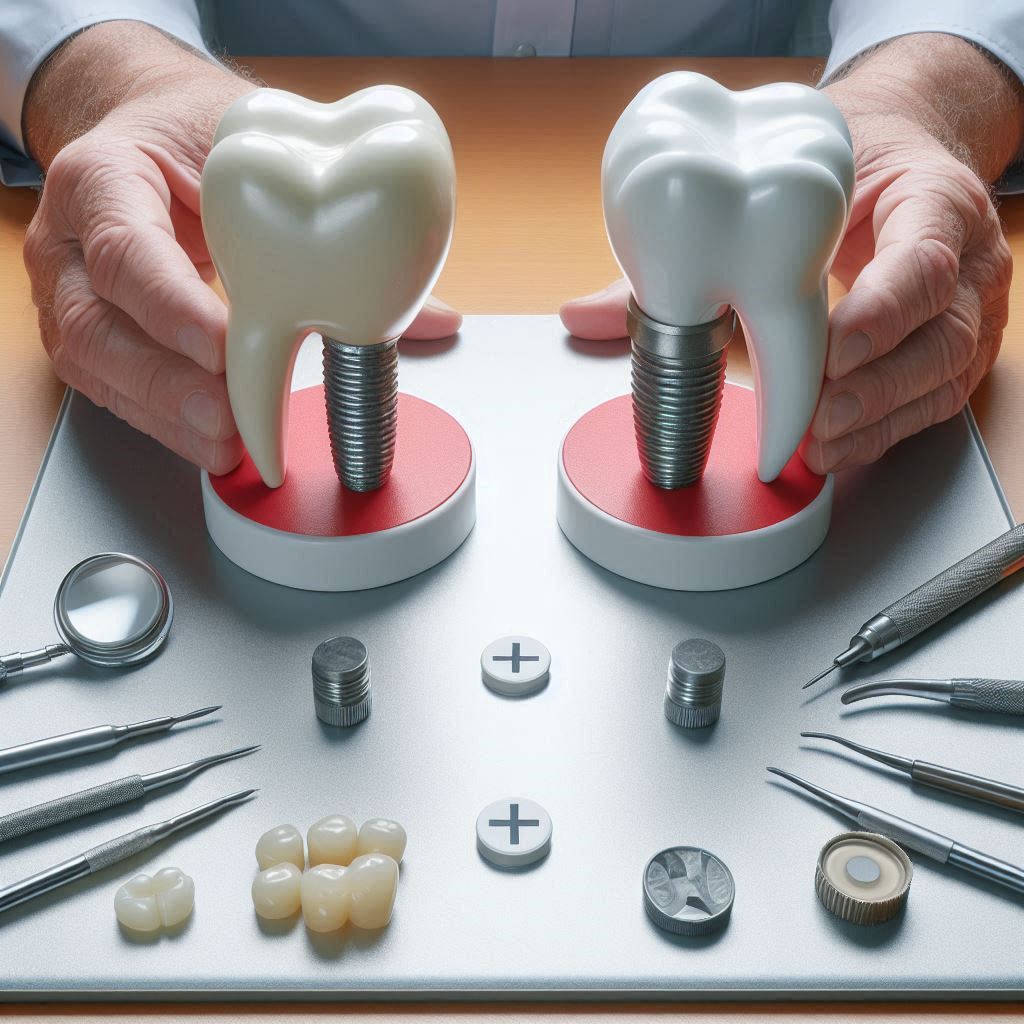Dental fillings are a crucial aspect of maintaining dental health, helping to restore teeth affected by cavities or decay. However, like all things in life, fillings are not immune to wear and tear. While dental fillings are designed to last a long time, they can occasionally fall out or become loose. If this happens unexpectedly, it can be a stressful experience, leaving you unsure of how to handle it properly. This article will provide a detailed, step-by-step guide on what you should do when a dental filling falls out, what causes fillings to fall out, how to manage the situation at home, and the importance of seeking professional care.
What Causes a Filling to Fall Out?
Dental fillings can fall out for several reasons, and understanding the root cause is essential for knowing how to manage the situation. Below are some of the primary factors:
Age of the Filling
One of the most common reasons fillings fall out is simply age. Over time, dental fillings—especially metal amalgam fillings—can begin to weaken and wear down. As fillings age, they become less effective at staying in place. The material may degrade due to pressure from chewing and the wear of everyday activities.
- Composite Fillings: These are more prone to degradation from biting or chewing forces compared to amalgam fillings. Over time, they can lose their bond to the tooth, particularly if the tooth has been compromised by decay.
Tooth Decay Under the Filling
Fillings are meant to restore teeth that have been damaged by cavities or decay. However, if the decay under the filling continues to progress unnoticed, it can lead to the filling becoming loose or falling out entirely. When the decay spreads beyond the edges of the filling, it can compromise the bond, causing the filling to break free from the cavity.
- Signs of Ongoing Decay: If you notice that the tooth around the filling is soft or discolored, it may indicate that decay is still active. This can cause the filling to loosen.
Trauma or Injury to the Tooth
Any physical impact to the mouth, such as a fall, sports injury, or a blow to the face, can potentially dislodge a filling. Even biting on something hard, like a popcorn kernel or ice, could put excessive pressure on a filling and cause it to loosen or break.
- Signs of Trauma: If the filling falls out after an accident or injury, you might also notice bruising or swelling in the surrounding gums. In such cases, prompt attention from a dentist is crucial to avoid further complications.
Teeth Grinding (Bruxism)
People who grind their teeth, either due to stress or as a subconscious habit while sleeping, may be at a higher risk of fillings falling out. The constant pressure exerted on the teeth during grinding can cause fillings to wear down and eventually fall out. Bruxism can also lead to cracked teeth, which increases the chances of a filling becoming loose.
- Signs of Bruxism: If you frequently wake up with a sore jaw or headaches, you may be grinding your teeth at night. Your dentist may suggest a night guard to protect your fillings and teeth from further damage.
Poor Bonding of the Filling
In some cases, the bonding agent used to hold a filling in place may not have been applied properly, or it may have degraded over time. Poor bonding can result in fillings that don’t adhere well to the tooth structure, making them more prone to falling out.
- Signs of Poor Bonding: If the filling feels loose or shifts when you touch it, this might be a sign that the bonding has weakened, and the filling may need to be replaced.
Eating Habits and Diet
Certain eating habits and foods can contribute to fillings loosening. Hard foods like nuts, hard candy, or ice can put significant pressure on fillings, leading to them dislodging. Sticky foods like caramel and taffy can also pull fillings out, especially if they are old or not properly sealed.
- Best Practices for Oral Health: Avoid eating excessively hard, sticky, or chewy foods to reduce the risk of damaging or dislodging fillings.
What to Do Immediately After a Filling Falls Out
The immediate actions you take after losing a filling can significantly impact the outcome of the situation. Below is a step-by-step guide on what to do if a dental filling falls out:
Assess the Situation: Are You in Pain?
After a filling falls out, you may feel immediate discomfort or pain, especially if the tooth is now exposed to air, food, or liquids. If the cavity is deep or the surrounding tooth is sensitive, you may feel pain when chewing or drinking.
- Sensitivity: Cold, hot, or sweet foods and drinks can trigger sharp sensitivity in the exposed tooth.
- Pain Relief: If you experience pain, take over-the-counter pain relievers like ibuprofen or acetaminophen to manage discomfort until you can see a dentist.
Examine the Tooth for Any Remaining Fillings or Fragments
If the filling came out in one piece, you should inspect it carefully to see if any fragments are left inside the cavity. You may want to save the filling and bring it to the dentist, as it could be useful in assessing the problem.
- Saving the Filling: Place the dislodged filling in a clean container or wrap it in plastic wrap. Be sure to bring it with you to your dental appointment.
Clean the Affected Area
Gently rinse your mouth with warm water to clean the cavity and remove any debris. Be careful not to touch the exposed tooth too aggressively with your toothbrush, as this could irritate the area or cause further damage. Using a mild mouthwash can help reduce bacteria around the exposed cavity.
- Avoid Alcohol-Based Mouthwash: Some mouthwashes contain alcohol, which can irritate an exposed tooth or make it even more sensitive.
- Dental Floss: Use dental floss around the tooth to remove any food particles that may be stuck.
Protect the Exposed Tooth Temporarily
If the cavity is large or the tooth is sharp or jagged, you might want to cover it temporarily to protect the area from further damage and discomfort. There are several ways to do this:
- Dental Cement: Temporary dental cement is available at most drugstores and can be used to cover the cavity temporarily. While this will not permanently solve the problem, it will offer some protection until you can see a dentist.
- Orthodontic Wax: If you have orthodontic wax available, you can use it to cover any sharp edges of the exposed tooth.
- Sugar-Free Gum: In cases where you can’t get dental cement, you can use sugar-free gum to cover the area temporarily. However, keep in mind that this is not a long-term solution.
Avoid Eating or Chewing on That Side
After a filling falls out, it’s important to avoid chewing on that side of your mouth. This will reduce the risk of further damaging the exposed tooth or irritating the sensitive cavity. Stick to soft foods that don’t require much chewing, and avoid very hot or cold foods until you can see a dentist.
When to See a Dentist
It is crucial to visit a dentist as soon as possible after a filling falls out. Delaying treatment can lead to further complications, including infection, increased tooth decay, and even tooth loss in severe cases. Here’s why prompt care is necessary:
Risk of Tooth Decay
When a filling falls out, the exposed cavity is vulnerable to bacteria, food, and saliva entering the tooth. This increases the risk of further decay and infection. Over time, untreated cavities can worsen, leading to a need for more extensive dental work like a root canal or crown.
Increased Sensitivity
The exposed tooth may become increasingly sensitive, making it difficult to eat or drink comfortably. Without proper care, the sensitivity could worsen, and you may experience more intense pain as the nerve of the tooth becomes irritated.
Infection or Abscess Formation
If bacteria enter the cavity and infect the underlying tooth structure, an abscess may form. An abscess is a pocket of pus that can cause swelling, fever, and severe pain. If left untreated, the infection can spread and even result in tooth loss.
Aesthetic Concerns
Depending on where the filling was located, the missing filling may be noticeable to others. This can be a cosmetic concern, particularly if the filling was in a highly visible area like a front tooth.
Professional Evaluation
Even if the cavity doesn’t cause you pain, it’s essential to have a dentist evaluate the situation. A dentist can determine if further decay has occurred, and they can ensure that your new filling will be securely placed to prevent future issues.
How Will the Dentist Repair the Cavity?
When you visit the dentist, several treatments may be considered, depending on the extent of the damage and the condition of the tooth. Here’s what you can expect:
Tooth and Cavity Evaluation
The dentist will begin by carefully examining the cavity, checking for any remaining filling material, and assessing the condition of the surrounding tooth structure. An X-ray may be taken to evaluate the extent of decay under the filling.
Cleaning and Decay Removal
If decay is present under the old filling, the dentist will clean out the cavity to remove any infected tissue. This may involve using a dental drill or laser to remove decayed material, and the dentist may clean the area with an antimicrobial solution.
Filling Replacement Options
- Amalgam Fillings: If the cavity is large and there’s enough tooth structure left, the dentist may choose to replace the old filling with a new amalgam filling. These metal fillings are durable and are a good choice for back teeth.
- Composite Fillings: If the cavity is smaller or you prefer a more aesthetic option, the dentist may use composite resin fillings. These can be color-matched to your natural tooth, making them ideal for visible areas like the front teeth.
- Ceramic Fillings: For larger cavities or those requiring additional strength, ceramic or porcelain fillings may be used. These fillings are durable, long-lasting, and look more natural than amalgam.
Crown or Other Restorative Procedures
In some cases, if the cavity is too large to support a filling, the dentist may recommend a dental crown. A crown is a custom-made cap that fits over the entire tooth, restoring its strength and function.
- Crown Procedure: The dentist will file down the remaining tooth structure to create a base for the crown, then take an impression of the tooth. A temporary crown may be placed until the permanent one is ready.
Preventing Fillings from Falling Out
While you can’t always prevent a filling from falling out, there are steps you can take to reduce the risk:
Regular Dental Checkups
Regular dental checkups are essential for detecting issues before they become major problems. Your dentist will inspect your fillings and look for any signs of wear, decay, or loosening.
Proper Oral Hygiene
Maintaining good oral hygiene is crucial for preventing decay. Brush your teeth at least twice a day with fluoride toothpaste and floss daily to remove plaque and bacteria from around fillings.
Avoid Hard and Sticky Foods
As mentioned earlier, chewing on hard or sticky foods can put excessive stress on fillings. Avoid foods like ice, popcorn kernels, caramel, and taffy.
Wear a Mouthguard if Necessary
If you grind your teeth at night, wearing a custom mouthguard can help protect your fillings and prevent further damage.
Conclusion
A filling falling out can be an unexpected and distressing experience, but with the right approach, it doesn’t have to lead to further complications. By following the proper steps immediately after a filling falls out, and seeking professional care as soon as possible, you can minimize the risks and ensure the best outcome for your oral health. Regular dental visits, good oral hygiene, and protecting your teeth from trauma are all important measures to prevent fillings from falling out in the future.
By understanding what causes fillings to fall out, how to address the situation promptly, and the importance of professional dental care, you can handle this situation with confidence and ensure that your teeth remain healthy and strong for years to come.
SOURCES
American Dental Association. (2020). Understanding dental fillings: Types and uses. Journal of the American Dental Association, 151(6), 365-373.
Bartlett, D. W., Wang, D. & Vardhaman, P. (2018). Restorative dentistry: Materials and techniques for the modern dentist. Dental Clinics of North America, 62(4), 517-536.
Cameron, A. C., & Gupta, A. (2022). Managing dental decay: Preventing and treating cavities in the modern age. Journal of Clinical Dentistry, 28(2), 112-119.
Ferrari, M., Monticelli, F. & Tosetti, M. (2017). Advances in dental restorative materials. Elsevier Health Sciences.
Grover, L. & Patel, M. (2019). The significance of restorative materials in dental practice. International Journal of Dentistry, 2019, 1-10.
Kapur, K., Parker, W. & Singh, R. (2020). Factors contributing to filling failure: An in-depth review of dental material longevity. British Dental Journal, 229(9), 629-635.
Lang, N. P. & Löe, H. (2016). Clinical periodontology and implant dentistry (6th ed.). Blackwell Munksgaard.
McDonald, R. E., Herzberg, G. & Douglas, S. (2015). Contemporary dental materials (11th ed.). Elsevier.
Miller, M. R. & Kopperud, H. L. (2018). Principles of restorative dentistry. Springer.
Rang, K. & Murnane, S. (2020). The evolution of dental fillings: From amalgam to composite resins. Australian Dental Journal, 65(3), 263-268.
Takahashi, H., Sato, H. & Mori, M. (2021). Impact of dental trauma on filling longevity and tooth integrity. Journal of Clinical Dentistry, 32(4), 410-416.
Watanabe, H., Ueno, M. & Fukui, M. (2019). Dental materials science: Understanding clinical performance and longevity. Elsevier Science.
HISTORY
Current Version
February 24, 2025
Written By:
SUMMIYAH MAHMOOD




